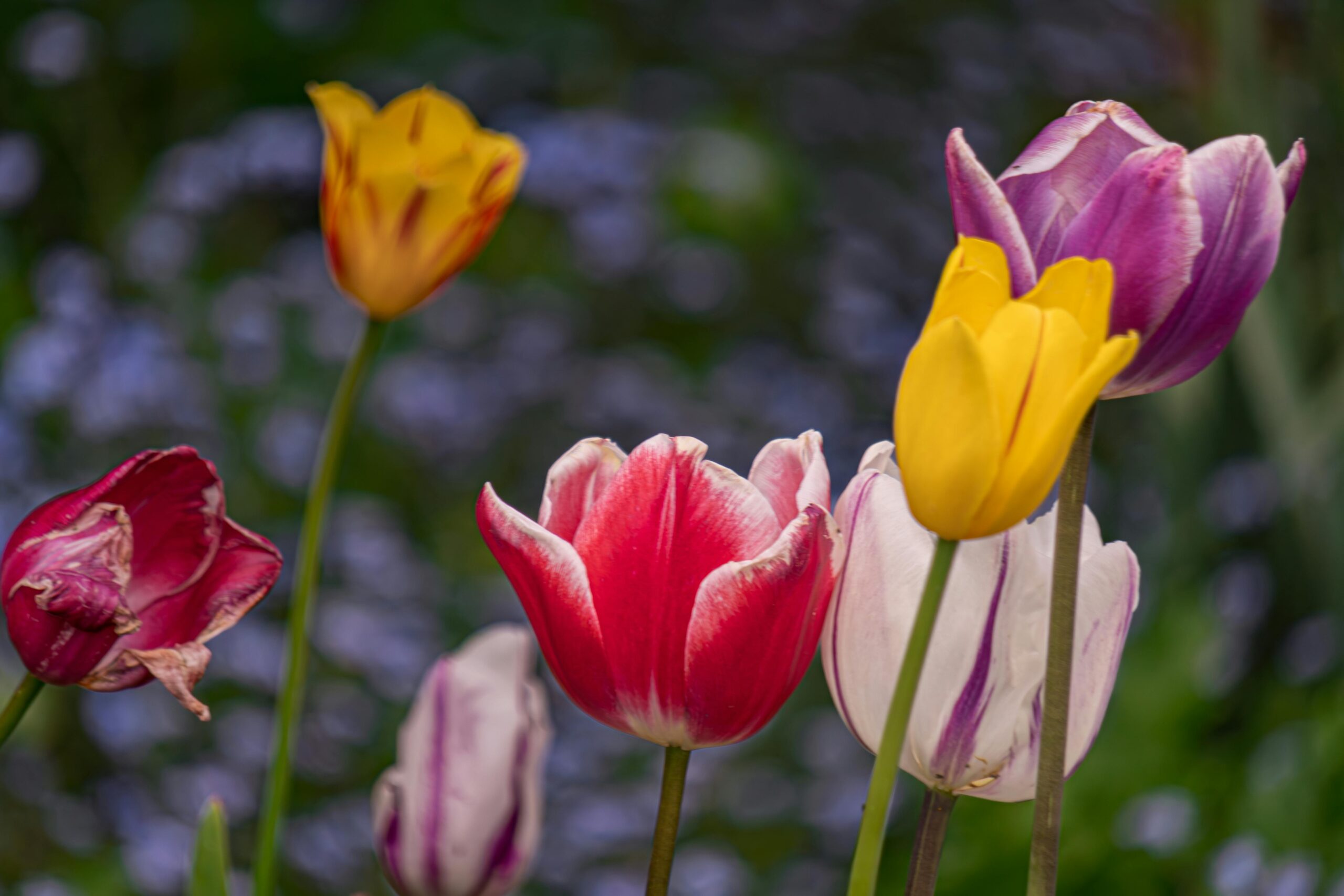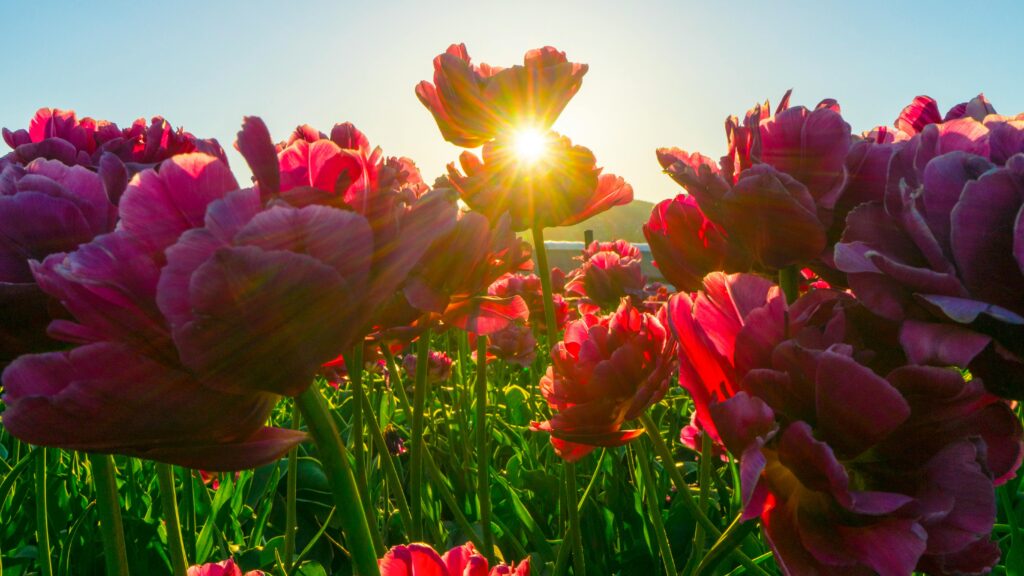
Tulips are among the most beloved flowers in the world, known for their vibrant colors, elegant shapes, and deep historical significance. Whether planted in gardens, displayed in floral arrangements, or cultivated for large-scale production, tulips captivate the hearts of flower enthusiasts everywhere. However, for these flowers to thrive, understanding the ideal climate for tulips is crucial. This guide explores everything you need to know about tulips and the environmental conditions that best support their growth.
1. Understanding Tulips: A Brief Overview
Tulips (Tulipa) belong to the lily family (Liliaceae) and are native to Central Asia and Turkey. They have been cultivated for centuries and hold great cultural and economic importance, especially in countries like the Netherlands. Tulips are perennials that grow from bulbs, producing stunning blooms in spring after a period of winter dormancy. Their adaptability and striking beauty make them a favorite among gardeners and commercial growers alike.
2. The Ideal Climate for Tulips
Tulips thrive in temperate climates with distinct seasonal changes. They require cold winters, mild springs, and moderate summers to achieve optimal growth. Here are the key climate conditions necessary for tulips to flourish:
Cold Winters for Dormancy
Tulips need a cold period to initiate proper growth. Ideally, they should experience winter temperatures between 35°F and 45°F (1°C to 7°C) for 12 to 16 weeks. This chilling period helps activate the bulbs, ensuring strong stems and vibrant flowers in spring.
Mild Springs for Blooming
Once tulips have undergone their necessary winter dormancy, they require a gradual transition into spring. Ideal spring temperatures range from 50°F to 65°F (10°C to 18°C). If temperatures rise too quickly, tulips may bloom prematurely and have a shorter lifespan.
Cool, Dry Summers for Bulb Development
After blooming, tulip bulbs need a dry summer rest period. Excessive heat and humidity can cause fungal diseases and rot. The best summer conditions for tulip bulbs include temperatures between 70°F and 85°F (21°C to 29°C) with low humidity levels.
Well-Drained Soil
Beyond temperature requirements, soil quality plays a critical role in tulip success. Tulips thrive in sandy or loamy soil with good drainage. Bulbs left in wet, heavy soil are prone to rot and fungal infections.
3. Best Regions for Growing Tulips
Several regions around the world provide the ideal climate for tulips. These areas have distinct seasonal changes, allowing tulips to follow their natural growth cycle. Some of the best places for tulip cultivation include:
The Netherlands: The Tulip Capital of the World
The Netherlands is famous for its extensive tulip fields, particularly in regions like Keukenhof and Lisse. The country’s temperate maritime climate, with cool winters and mild springs, creates perfect conditions for tulip cultivation.
The United States: Ideal States for Tulips
Certain states in the U.S. have climates suitable for growing tulips:
- Washington (especially the Skagit Valley)
- Michigan (notably Holland, MI, which hosts an annual tulip festival)
- Oregon (Willamette Valley)
- New York (Hudson Valley)
Canada: A Tulip Haven
Canada’s cool winters and temperate springs make it an excellent location for tulip farming. Ottawa, for example, celebrates tulips every year with the Canadian Tulip Festival.
Other Notable Regions
- Turkey: The historical origin of tulips, where they thrive in cool mountain climates.
- France: The Provence region is known for tulip cultivation.
- United Kingdom: Parts of England with well-drained soil and moderate temperatures support tulip growth.

4. How to Cultivate Tulips in Different Climates
Even if you don’t live in an ideal tulip-growing region, you can still cultivate these flowers by creating the right conditions. Here’s how to adapt tulip care to different climates:
Growing Tulips in Warm Climates
In warmer regions where winter temperatures do not drop below 45°F (7°C), tulip bulbs should be pre-chilled before planting. Store bulbs in a refrigerator at 35°F to 45°F (1°C to 7°C) for at least 10 to 12 weeks before planting them in the garden.
Protecting Tulips from Extreme Cold
In regions with harsh winters below -10°F (-23°C), tulips may need additional protection. Apply a thick layer of mulch over the soil to insulate the bulbs from extreme cold temperatures.
Managing Tulips in Humid Climates
Humidity can cause fungal diseases in tulips. To prevent this:
- Plant bulbs in well-drained soil.
- Space bulbs appropriately to improve air circulation.
- Use a fungicide treatment before planting.
5. Tulip Care Tips for Stunning Blooms
Regardless of your climate, these essential care tips will help ensure healthy, vibrant tulips:
- Choose the Right Variety: Some tulip varieties are better suited for specific climates. For example, species tulips are more resilient in warmer regions.
- Plant at the Right Depth: Tulips should be planted 6 to 8 inches (15 to 20 cm) deep to protect them from temperature fluctuations.
- Water Wisely: Tulips need moderate watering. Avoid overwatering, especially after blooming.
- Fertilize Properly: Apply a balanced fertilizer when planting and again in early spring for strong growth.
- Deadhead After Blooming: Removing spent flowers prevents seed formation and directs energy back to the bulb.
- Allow Leaves to Die Back Naturally: Do not cut tulip leaves immediately after blooming; they help store energy for the next season.
6. The Impact of Climate Change on Tulips
Climate change poses challenges for tulip growers worldwide. Rising temperatures can shorten the required winter chilling period, leading to weak blooms. Unpredictable weather patterns also affect bloom timing and bulb health. Growers are now exploring adaptive strategies, such as:
- Developing heat-tolerant tulip varieties.
- Using artificial chilling methods.
- Adjusting planting schedules to align with shifting climate patterns.
Conclusion
Tulips are among the most enchanting flowers, bringing joy and color to gardens worldwide. Understanding the ideal climate for tulips is essential for cultivating strong, beautiful blooms. With the right combination of cold winters, mild springs, and well-drained soil, tulips can thrive and produce breathtaking floral displays year after year.
Whether you are growing tulips in a traditional tulip-friendly region or adapting them to a different climate, careful planning and attention to environmental conditions will help you achieve success. By selecting the right tulip varieties, providing proper care, and managing climate challenges, you can enjoy a spectacular tulip garden that flourishes season after season.
Are you ready to grow your own tulip paradise? Start preparing your bulbs today and embrace the beauty of tulips in your landscape!

One thought on “Tulips and Their Ideal Climate: A Complete Guide to Growing Stunning Blooms”